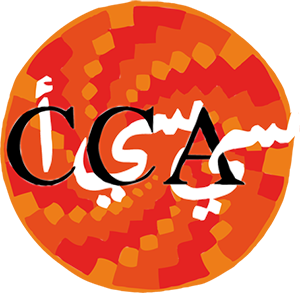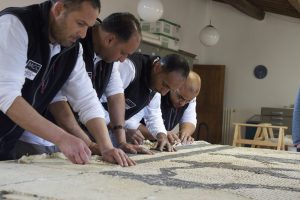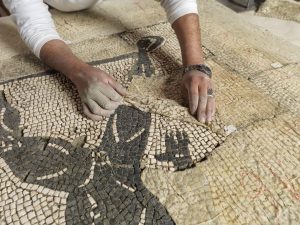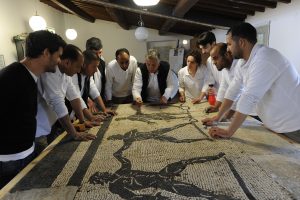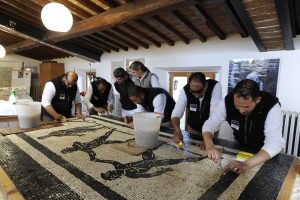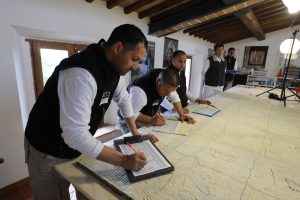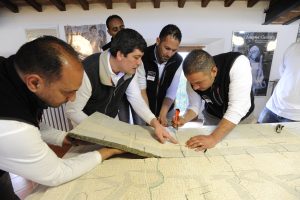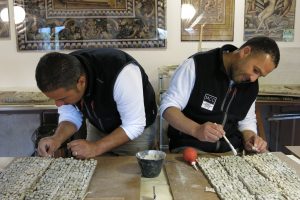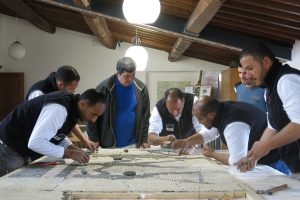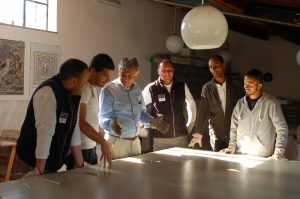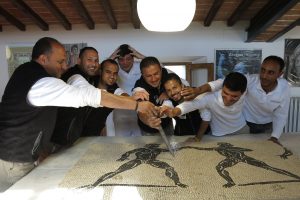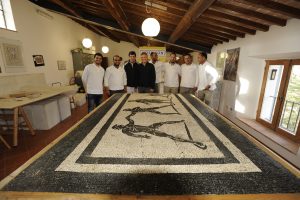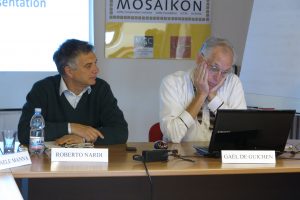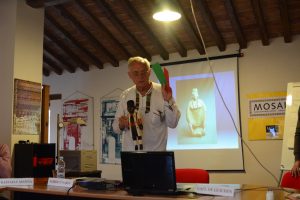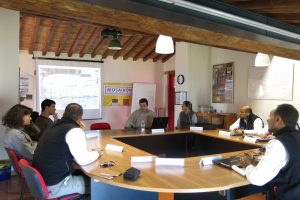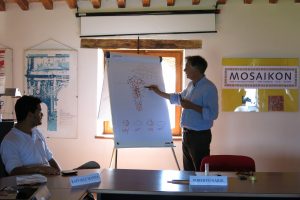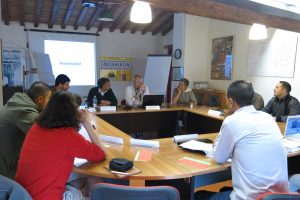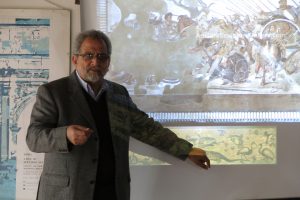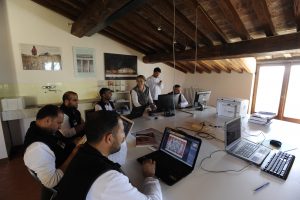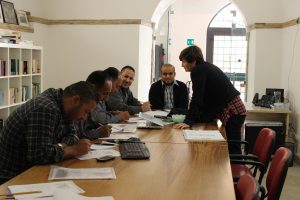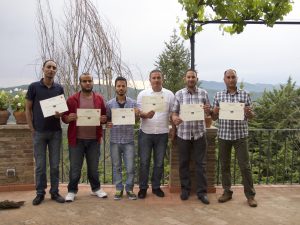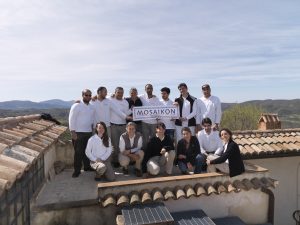Course Intro
Mosaic Conservation Course (MCC) – Libya 2014 is a project born from a collaboration with the Libyan Department of Antiquities. It is part of MOSAIKON, an international initiative aiming to build local capacity for the conservation and management of mosaics in the Mediterranean region. The institutions that take part in the project are the Getty Conservation Institute (GCI), the Getty Foundation, the International Centre for the Study of the Preservation and Restoration of Cultural Property (ICCROM) and the International Committee for the Conservation of Mosaics (ICCM).
The course was structured in two modules of four weeks each, and it was attended by five restorers of Libya’s Department of Antiquities. In Module 2 a member of the Directorate General of Antiquities and Museum (DGAM) of Syria joined the group.
Both modules took place in Italy, at CCA’s headquarters in Belmonte in Sabina, Rieti. Module 1 ran from the 23rd of March to the 18th of April 2014, while Module 2 from the 19th of May to the 13th of June 2014.
During Module 1 the Chairman of the Department of Antiquities, Dr. Abdulrahman Yakhlef and his deputy, Dr. Mustafa Turjman, visited the course location in Belmonte in Sabina (Rieti, Italy), and took part to the study visit to Naples and Pompeii.
The course combined theoretical lectures with intensive laboratory practice, presentation and discussion of case studies, and study trips to cultural destinations in Italy.
During the course, participants had the opportunity to put theoretical knowledge into practice, working on an original Roman mosaic detached from a Villa in Rome, dated to the 2nd century A.D. In laboratory activities they undertook the whole process of reapplying the mosaic on a new support, using traditional materials. Careful documentation of the work was carried out during each phase, using graphic, photographic and digital tools.
Other didactic activities that took place during the course were field trips to cultural places, such Rome and its museums, Naples, Pompeii, Ravenna and Venice. Study visits allowed participants to increase their historical and technical knowledge of Roman and Byzantine mosaics, both in their original contexts and on display in museums.
Finally, participants attended weekly English classes in a language school in Rieti, to improve their communication skills in an international context.

See more on MOSAIKON initiative:
on the Getty Foundation website
on the GCI website
